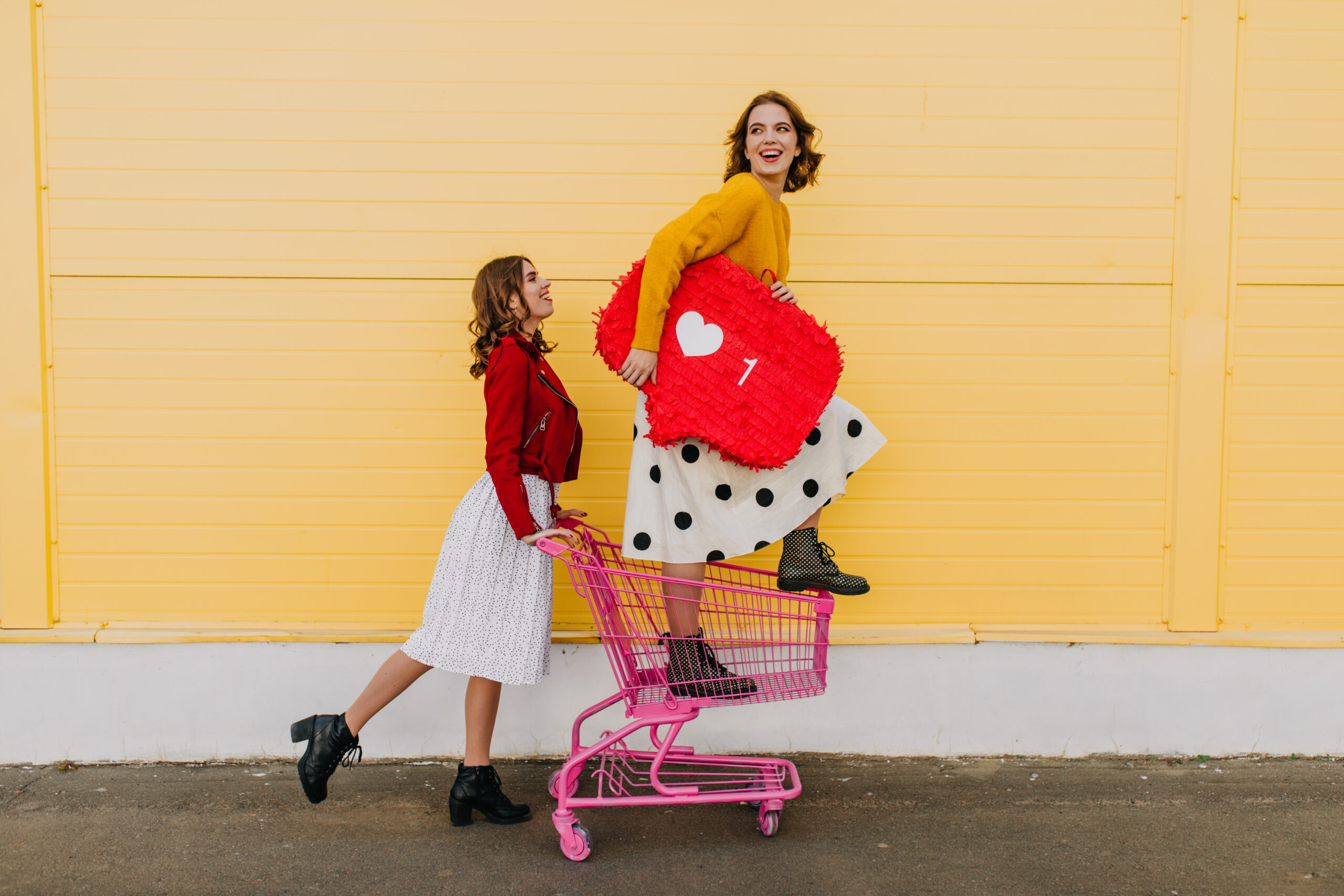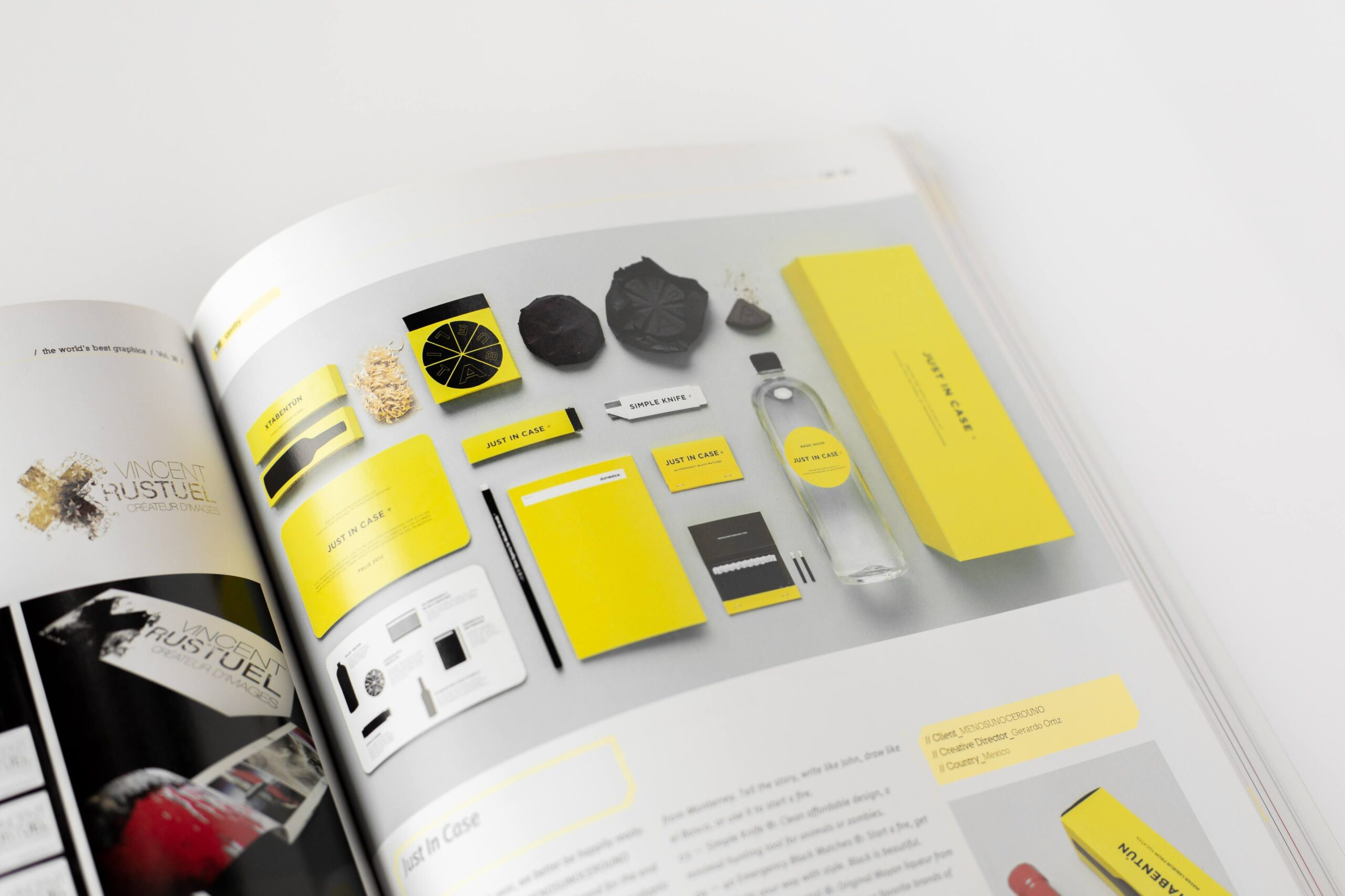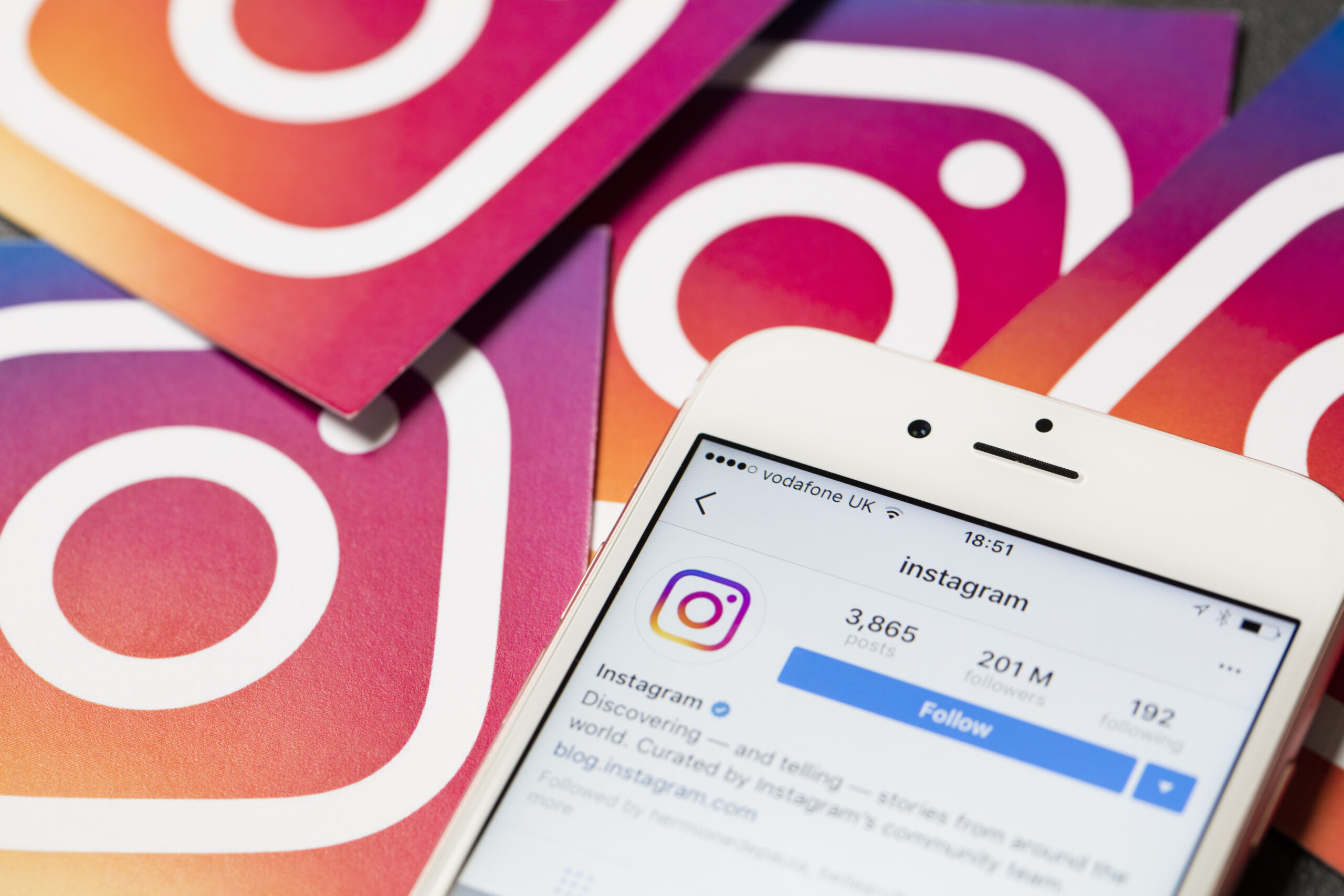Color Theory in Marketing: How to Choose the Right Colors

Contents
Have you ever wondered why some logos or advertisements catch your attention more than others?
It might have something to do with the colors they use.
What is Color Theory?
Color theory in marketing is the study of how different colors can influence our emotions and behavior. By understanding the psychology of color, marketers can choose the right colors for their branding and advertising to make a stronger impact on their target audience.
In this article, we’ll explore the basics of color theory in marketing and how it can be used to create effective marketing campaigns.
Importance of Color Theory in Marketing
Color theory in marketing is like the secret sauce that can make or break your branding efforts. Without it, your logo might as well be a stick figure drawn in crayon. So, let’s talk about why color theory is so important.
First of all, colors are like emotions in a bottle. They can make us feel happy, sad, excited, or bored out of our minds. And if you want to sell something, you gotta make people feel something.

That’s where color theory comes in. By choosing the right colors for your brand, you can trigger the right emotions in your target audience and make them more likely to buy your stuff.
But it’s not just about emotions. Color theory is also about standing out in a sea of competition.
Consider this: If all logos and advertisements were in black and white, how could you differentiate between them and decide which one to select? It would be impossible.
By harnessing the power of color, you can establish a distinctive and unforgettable brand identity that distinguishes you from the competition. Additionally, it’s important to acknowledge the influence of association.
And let’s not forget about the power of association. When we see certain colors, we automatically associate them with certain things.
Like red with love and passion, or green with nature and money (unless you’re colorblind, then all bets are off).
By tapping into these associations, you can create a subconscious connection between your brand and certain qualities or values.
So, there you have it. It’s that powerful.

Tip: Use Logo Maker Shop to find the best color combination for your brand in seconds
The Psychology of Colors

The basic colors and the meanings behind them are simple.
We’ve got red, the color of passion, love, and, let’s be honest, danger (cue the flashing red lights).
Then there’s blue, the color of trust, loyalty, and sadness (sorry, Eeyore). Green is all about growth, nature, and money (cha-ching!).
Yellow is the color of happiness, playfulness, and, apparently, the most annoying color to read on a white background (who knew?).

And black? Well, black is the color of sophistication, power, and darkness. It’s also the go-to color for every angsty teenager who wants to look edgy.
So, there you have it, folks. The basic colors and their meanings. Now go forth and color your world.
It’s not just about the basic colors. Oh no, there’s a whole rainbow of shades and hues out there that can make us feel all sorts of things.
For example, a bright, sunny yellow might make us feel happy and energized, while a dull, mustard yellow might make us feel bored and uninspired (sorry, mustard lovers).
And don’t even get me started on the different shades of red. A deep, dark red can evoke feelings of passion and danger, while a lighter, pinkish red can evoke feelings of romance and sweetness. Hues can also play a big role in how we perceive colors.
A cool, blueish green might make us feel calm and serene, while a warm, yellowish green might make us feel lively and energetic.
So, when it comes to color theory in marketing, it’s not just about picking a color and calling it a day. It’s about choosing the right shade and hue to create the desired emotional response in your target audience.
The Color Wheel

The color wheel – the trusty guide to all things chromatic! It’s like a big, circular rainbow that’s been organized into 12 neat little slices. Each slice is like a different flavor of color, ready to be mixed and matched to your heart’s content.
And speaking of mixing, let’s talk about the magic that happens when two colors get cozy with each other.
Orange, green, and purple are like the cool kids of the color wheel – they’re the ones who know how to party.
They’re made by blending two primary colors together and create all sorts of fun and funky vibes.
But wait, there’s more! The color wheel is also home to the tertiary colors, which are like the middle children of the chromatic family.
They’re not quite as bold as the secondaries, but they’re not as basic as the primaries either.
They’re created by mixing a primary color with a secondary color, and they bring a whole new level of nuance and depth to your color schemes.
So if you ever find yourself in a color conundrum, just turn to the trusty color wheel. It’s not just a pretty picture – it’s a masterful tool that will guide you to color harmony and happiness.
For example, complementary colors, which are opposite each other on the wheel, create a bold and striking contrast.
Analogous colors, which are next to each other on the wheel, create a harmonious and cohesive look. So, if you want to be a color wizard in the world of marketing, you better get familiar with that color wheel!
Choosing the Right Colors for Your Brand

Picking out the perfect color scheme for your brand is like picking out the perfect outfit for a first date – you want to make a lasting impression and show off your best self! But instead of choosing between a cute dress or a snazzy suit, you’re choosing between a rainbow of colors.
Your brand’s colors should be a reflection of your personality and values. Are you a wild and wacky brand that loves to have fun?
Maybe you’ll want to go with some bright and bold colors like neon green or electric pink. Or maybe you’re a more serious and sophisticated brand that wants to keep it classic with some navy blue or charcoal gray.
But hold your horses – it’s not just about what looks good on you. You also need to think about your target audience and what colors they’re drawn to.
If you’re a health and wellness brand, you might want to go with calming and natural colors like leafy green or ocean blue. And if you’re a tech brand, you might want to go for sleek and futuristic colors like metallic silver or deep black.
And let’s not forget about the impact of industry and product type on color choices. Certain industries and products have specific color associations that you’ll want to consider when making your branding decisions.
So whether you’re in fashion or finance, there’s a perfect palette out there for you – you just have to find it!
The impact of industry and product type on color choices
The impact of industry and product type on color choices is something that should not be overlooked in the world of marketing.
Different industries and products can have different color associations, and it’s important to consider these when making color choices for your brand.
For example, the food and beverage industry often uses warm and appetizing colors like red and orange to stimulate the appetite.

Let’s get real – not all products are created equal, and that means they don’t all look the same either.
In fact, even within the same industry, different product types can have wildly different color associations!
For example, if you’re selling a fancy perfume that costs more than your rent, you might want to go for some elegant and sophisticated colors like shimmering gold or sleek black.
But if you’re all about that natural life and you’re selling organic skincare, you might want to go for some earthy and organic tones like a soothing green or a cozy brown.
By considering the unique color associations of your industry and product type, you can create a visual identity that truly speaks to your audience and captures the essence of your brand.
So don’t be afraid to experiment with different colors and see what works best for you! Who knows, you might just discover a whole new side of your brand that you never even knew existed.
And if you need a little inspiration, there are plenty of case studies out there to show you how other brands have successfully used color to their advantage. So go ahead and dive in – your brand’s perfect palette is waiting for you!
Case Studies
Let’s talk about some real-world examples. Case studies are a great way to see how color can make or break a brand.
Take Pepsi, for instance.

You can’t think of Pepsi without picturing that iconic blue and red color combo. It’s instantly recognizable and gives the brand a sense of confidence and trustworthiness.
Or how about Apple? 🍏
Their sleek and modern color scheme of white, silver, and black screams innovation and sophistication. It’s like they’re saying, “Yeah, we make computers, but they’re not just any computers – they’re Apple computers.”
And let’s not forget about the fast-food giant McDonald’s, whose cheery and appetizing colors of red and yellow practically scream “Come get your burgers here!” It creates a sense of fun and excitement around the brand – even if the burgers aren’t exactly haute cuisine.
These brands have successfully used color to create a visual identity that not only stands out in their respective industries but also resonates with their target audience. So take a lesson from the pros – color is a powerful tool in your branding arsenal!
By studying successful examples like these, you can learn valuable lessons about the power of color in branding and how to make the most of it for your own brand.
Tips and Best Practices of Color Theory in Marketing
Choosing the right colors for your brand can be a bit overwhelming, but fear not!
Here are a few tips and tricks to make it easier.
First off, get to know your colors!
Learn about the emotional and psychological impact different colors can have on your customers. Maybe yellow will make them feel happy and energized, or blue will give them a sense of trust and security. Pick colors that match your brand’s personality and values.
Next up, take into account the industry and product you’re in. If you’re in the wellness industry, you might want to go for calming and natural colors, while a tech brand might opt for sleek and modern hues.
Consistency is key! Make sure to use the same color scheme across all your marketing materials. This will help your brand to be easily recognizable and create a strong visual identity.
And lastly, be bold and brave! Don’t be afraid to try new things and experiment with different color choices. Who knows, a pop of purple might be just what your brand needs to stand out from the crowd!

By following these tips and best practices, you can make informed and effective color choices for your brand that will help you connect with your target audience and achieve your marketing goals.
Best practices for using color in branding and marketing
Here are some best practices for using color in branding and marketing:
- Know your target audience: Understanding your target audience’s preferences, values, and cultural backgrounds can help you choose colors that resonate with them and create an emotional connection.
- Use contrast effectively: Use contrasting colors to draw attention to important elements like calls-to-action and headlines.
- Have fun and play around: Mix and match colors like you’re playing dress-up and see how they look on different marketing materials. Then, analyze the results like a detective and adjust as needed to find the perfect color combo for your brand.
- Be in the know: Keep up with what’s hot and what’s not in the world of design and pop culture to keep your color choices current and cool.
By following these tips and tricks, you can use color to spice up your branding and marketing efforts, make your brand unforgettable, and attract and keep your dream customers.
Avoiding common mistakes in color choice

When it comes to choosing colors for your brand, there are some common mistakes that you should avoid:
- Choosing colors that clash: Avoid choosing colors that clash with each other or create an unpleasant visual experience for your audience. Use color theory principles to ensure that your color choices work well together and create a harmonious visual experience.
- Ignoring cultural associations: Colors can have different meanings and associations in different cultures, so it’s important to research and understand the cultural implications of your color choices to avoid any unintentional offense or miscommunication.
- Don’t be a victim of fashion fiascos: Although keeping up with the latest design trends is crucial, it’s also important to choose colors that will stand the test of time and not become outdated faster than a TikTok trend.
- Test and iterate: Make sure to test your colors in different situations and platforms before finalizing your choices, so you don’t end up with an awkward color mismatch.
- Choosing colors based on personal preference: Don’t let your own color preferences get in the way of effective branding – it’s all about pleasing your target audience, not just yourself. So keep an open mind and consider their color associations and preferences when choosing the perfect palette for your brand.
Future of Color Theory in Marketing

The future’s looking bright…and bold…and eco-friendly? Yup! There are some super cool color trends emerging in marketing that are shaking things up.
Brands are going wild with unexpected color combos and stepping out of their comfort zones with unconventional choices. And it’s not just about being daring – there’s a big push towards more sustainable options too.
If you want to stay ahead of the game, keep your finger on the pulse of the latest design trends and emerging color trends in your industry.
And remember, sometimes taking a risk and trying something new can pay off big time in the end!

As our Chief SEO & Branding Strategist, Robert Ellison is a digital marketing visionary with over 25 years of experience transforming brands through smart, data-driven SEO and impactful storytelling. Known for his expertise in aligning technical SEO with authentic brand narratives, he leads our team in creating strategies that boost search rankings while building strong, sustainable brand identities. A trusted advisor and frequent industry speaker, Robert combines deep technical knowledge with creative insight, helping our clients not only reach the top of search results but also genuinely connect with their audiences.








